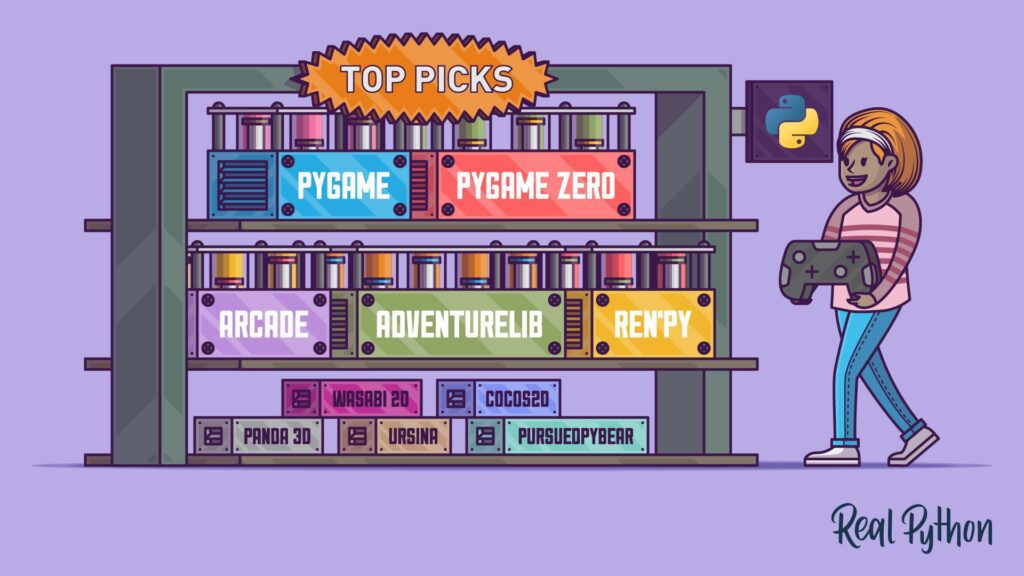Game development is a multi-disciplinary process that involves game design, sound design, animation, and programming. Programming is a significant aspect of the development of gaming, with game developers using programming languages such as C++, Java, Python, and TypeScript to create games. Game engines, such as Unity and Unreal Engine 4, are used to develop games more efficiently. Creating realistic graphics and sound is also critical to game development, with game developers using tools such as Autodesk Maya, Adobe Photoshop, and Pro Tools. Testing and debugging ensure that the final product is free from errors and works well on various devices.
Journey of Game Development: How Programming Languages Craft Games
Game development is a booming industry that has been growing at an amazing rate in recent years. The gaming industry is worth billions of dollars and is estimated to reach a whopping $300 billion by 2025. Game development involves a lot of aspects, such as game design, sound design, animation, and programming.
Programming plays a significant role in the development of games. A game’s programming language is the backbone of the entire game development process. There are several programming languages that game developers use to create games. Each programming language has its strengths and weaknesses, and each is used based on the game development needs.
Step 1: Game Design
Before programming begins, game design comes first. The game design process involves conceptualizing and designing the game’s storyline, gameplay mechanics, and graphics. The game’s blueprint is what programmers use to start coding the game’s mechanics.
Step 2: Choosing the programming language
Once the game’s blueprint is in place, the next step is to choose the programming language. Game developers use programming languages such as C++, Java, Python, and TypeScript, among others, to create video games.
C++
C++ is a powerful programming language that game developers use to create both 2D and 3D games. C++ is a low-level language that allows developers to have direct control over the computer’s hardware. C++ is used to create complex games, such as Mass Effect, Grand Theft Auto V, and World of Warcraft.
Java
Java is a high-level programming language used to create games for mobile devices and web browsers. Java is easy to use and learn, making it a great option for game developers who are just starting. Java has powered games such as Minecraft, Castlevania, and RuneScape.
Python
Python is a popular programming language used for creating games with simple mechanics or prototypes. It is a high-level programming language preferred by game developers for its ease of use and readability. Python has been used to create popular games such as World of Tanks, Cut the Rope, and Battlefield 2.
TypeScript
TypeScript is a new programming language that is gaining popularity in the game development industry. It is a superset of JavaScript that adds static typing and other features to the language. TypeScript is used to create games for HTML5, iOS, and Android platforms.
Step 3: Game Engine
Once the programming language has been chosen, game developers use game engines to develop games faster and more efficiently. Game engines are software frameworks that provide game developers with the tools they need to create games. Game engines save developers a lot of time by providing them with pre-built code that can be used to create complex mechanics.
There are several game engines used by game developers, such as the Unity game engine and Unreal Engine 4. Unity is a popular game engine used for creating 2D and 3D games for mobile devices, consoles, and desktops. Unreal Engine 4 is another popular game engine used for creating triple-A games with stunning graphics and high game performance.
Step 4: Graphics and Audio
Creating realistic graphics and sound is an essential part of game development. Graphics and sound effects enhance the player’s experience, making the game more engaging and enjoyable.
Graphics
Game developers use various tools to create graphics, such as Autodesk Maya, Adobe Photoshop, and 3D Studio Max. These tools allow developers to create 3D models, textures, and animations that make a game realistic and visually stunning.
Audio
Sound design is an essential aspect of game development. Game developers use professional sound design software such as Pro Tools, Cubase, and Logic Pro to create sound effects, dialogues, and music that enhances the gameplay.
Step 5: Testing and Debugging
The final step in game development is testing the game to find and fix bugs. Game developers use debugging tools such as Visual Studio and MonoDevelop to find and fix issues in the game’s code. Testing the game thoroughly ensures that the final product is free from errors and works well on various devices.
In conclusion, game development involves a complex process that requires expertise in various areas such as game design, programming, graphics, and sound design. Choosing the right programming language and game engine is essential in ensuring the game is developed efficiently and to the required standards. Success in the game development industry is, therefore, a result of cohesive teamwork and an effective use of available tools.
